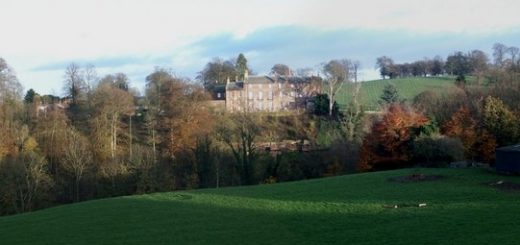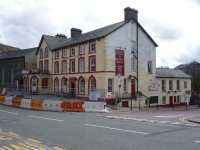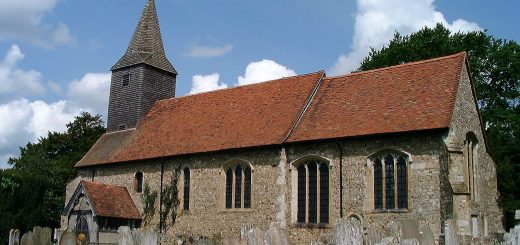Ludlow Castle
Ludlow castle said to be haunted by the ghost of a woman betrayed by her lover and forced to commit suicide after extracting her revenge. The events leading to this may have occurred in 1138 when Matilda captured Ludlow Castle and King Stephen had it under siege. Ludlow was the most important castle in the Marches of Wales and stronghold of the Earls of March.
 The ruin sits on a rocky outcrop overlooking the river Teme, consisting of a rectangular outer bailey, built in the latter half of the twelfth century and an oval inner bailey entered through a strong gatehouse called the Great Tower. The Great Tower entrance was blocked in 1190 and a newer one built to the east of it. The Great Hall, the Great Chamber Block, the Garderobe Tower, the Pendover Tower and the ruins of the Chapel of St Mary Magdelene lie within the inner bailey. The chapel is a Norman structure that resembles the Temple Church in London. All that remains of this building is the west door and circular nave. It is reputed to be haunted by the twelfth century Marion de la Bruere. Legend suggests that Marion had a secret lover called Arnold de Lys who got into the castle by a rope that Marion lowered over the battlements
The ruin sits on a rocky outcrop overlooking the river Teme, consisting of a rectangular outer bailey, built in the latter half of the twelfth century and an oval inner bailey entered through a strong gatehouse called the Great Tower. The Great Tower entrance was blocked in 1190 and a newer one built to the east of it. The Great Hall, the Great Chamber Block, the Garderobe Tower, the Pendover Tower and the ruins of the Chapel of St Mary Magdelene lie within the inner bailey. The chapel is a Norman structure that resembles the Temple Church in London. All that remains of this building is the west door and circular nave. It is reputed to be haunted by the twelfth century Marion de la Bruere. Legend suggests that Marion had a secret lover called Arnold de Lys who got into the castle by a rope that Marion lowered over the battlements
One fateful night when the castles lord, Joc de Dinan was absent, Arnold climbed into the castle left the rope for a hundred of his soldiers to climb and capture the castle. Marion, realising her betrayal, snatched Arnold’s sword and slit his throat before throwing herself from the Pendover or Hanging Tower. Stories vary somewhat regarding the ghost itself. Some say it is this death dive that her ghost re-enacts, and you can hear her scream as she falls to the rocks below. Others say she used to be seen wandering around the base of the tower itself.
An account of Marions death and betrayal by Arnold can be found in The History of Fulk Fitz-Warine. The Hanging Tower is also supposed to be haunted by the sound of heavy breathing, attributed to a phantom soldier.




Recent Comments